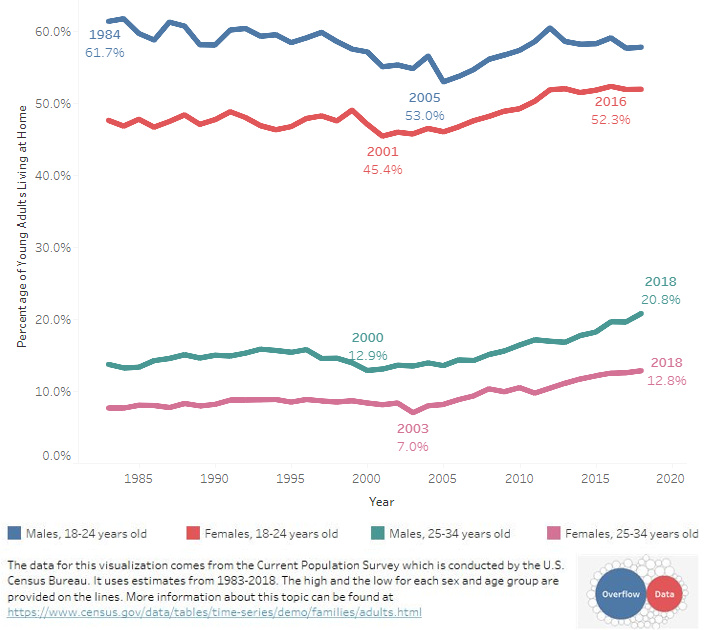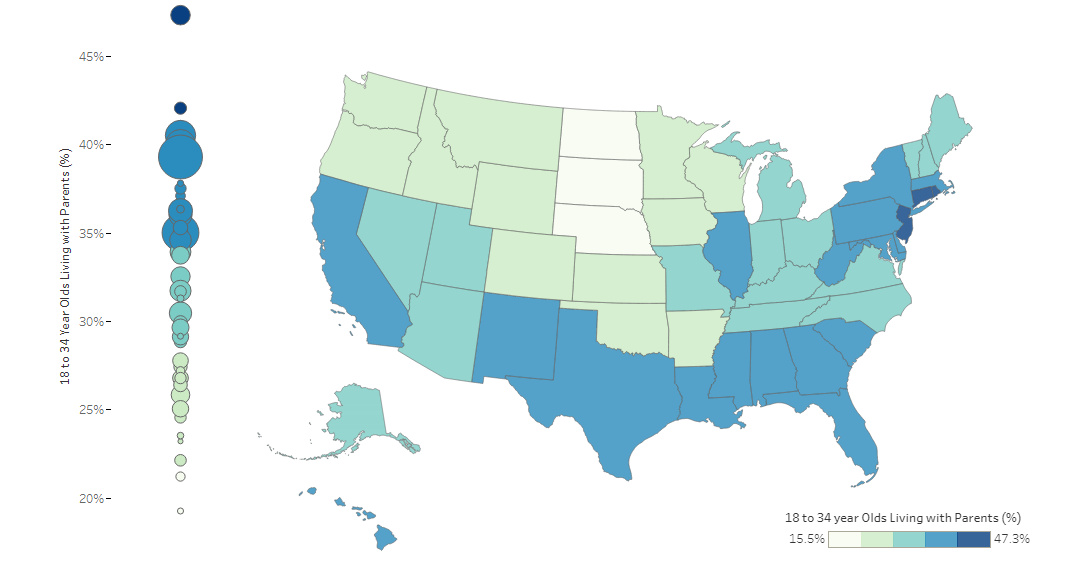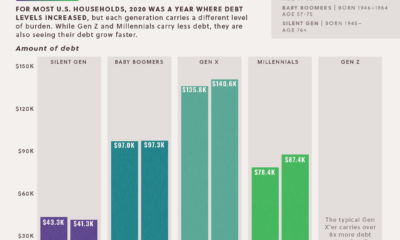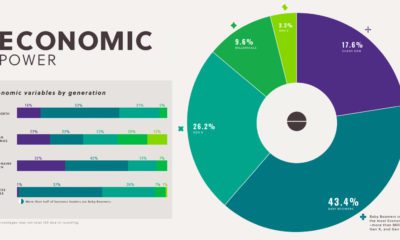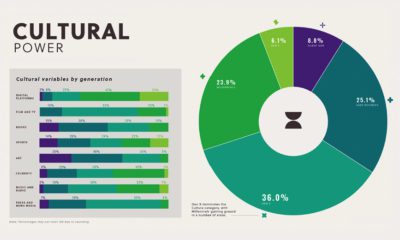As of 2017, it’s estimated that 34.5% of young adults (18-34 years old) in the U.S live at home – one of the highest percentages in recent memory. How does this national average compare to individual states, and how does data break down further by age and gender over time?
Living at Home
Today’s interactive map comes to us from Overflow Data, and visualizes data at the state level, showing a wide range from 16% (D.C., North Dakota) to closer to 47% (New Jersey). Here are the five states with the highest proportion of young adults living at home: New Jersey is the surprising leader here, with 47.3% of young adults between 18-34 years living at home. This is at least partially a result of the state’s proximity to big cities like New York City and Philadelphia, in which young adults choose to commute instead of renting or buying places in those cities themselves. With higher housing costs and rents, it’s also not surprising to see other states with large populations like California, Florida, and New York as being well represented at the top of the list.
Differences by Age
While figures are going up across the board, a particular subsegment (25-34 years old) stands out as rising to its highest point in at least 30 years. Both men and women in this older millennial segment are starting to become more likely to stay at home:
There are many potential culprits for this trend, including social and economic factors. It’s well-documented that millennials are marrying later, which is a traditional impetus for moving away from home. Today’s young adults are also putting off having kids until later in adulthood. At the same time, on the economic front, higher housing prices and mounting student debt are two factors that are preventing young adults from having the necessary resources to move out as early as they might like. What do you think is the major cause behind this trend, and do you think it will reverse? on These are in the form of Treasury securities, some of the most liquid assets worldwide. Central banks use them for foreign exchange reserves and private investors flock to them during flights to safety thanks to their perceived low default risk. Beyond these reasons, foreign investors may buy Treasuries as a store of value. They are often used as collateral during certain international trade transactions, or countries can use them to help manage exchange rate policy. For example, countries may buy Treasuries to protect their currency’s exchange rate from speculation. In the above graphic, we show the foreign holders of the U.S. national debt using data from the U.S. Department of the Treasury.
Top Foreign Holders of U.S. Debt
With $1.1 trillion in Treasury holdings, Japan is the largest foreign holder of U.S. debt. Japan surpassed China as the top holder in 2019 as China shed over $250 billion, or 30% of its holdings in four years. This bond offloading by China is the one way the country can manage the yuan’s exchange rate. This is because if it sells dollars, it can buy the yuan when the currency falls. At the same time, China doesn’t solely use the dollar to manage its currency—it now uses a basket of currencies. Here are the countries that hold the most U.S. debt: As the above table shows, the United Kingdom is the third highest holder, at over $655 billion in Treasuries. Across Europe, 13 countries are notable holders of these securities, the highest in any region, followed by Asia-Pacific at 11 different holders. A handful of small nations own a surprising amount of U.S. debt. With a population of 70,000, the Cayman Islands own a towering amount of Treasury bonds to the tune of $284 billion. There are more hedge funds domiciled in the Cayman Islands per capita than any other nation worldwide. In fact, the four smallest nations in the visualization above—Cayman Islands, Bermuda, Bahamas, and Luxembourg—have a combined population of just 1.2 million people, but own a staggering $741 billion in Treasuries.
Interest Rates and Treasury Market Dynamics
Over 2022, foreign demand for Treasuries sank 6% as higher interest rates and a strong U.S. dollar made owning these bonds less profitable. This is because rising interest rates on U.S. debt makes the present value of their future income payments lower. Meanwhile, their prices also fall. As the chart below shows, this drop in demand is a sharp reversal from 2018-2020, when demand jumped as interest rates hovered at historic lows. A similar trend took place in the decade after the 2008-09 financial crisis when U.S. debt holdings effectively tripled from $2 to $6 trillion.
Driving this trend was China’s rapid purchase of Treasuries, which ballooned from $100 billion in 2002 to a peak of $1.3 trillion in 2013. As the country’s exports and output expanded, it sold yuan and bought dollars to help alleviate exchange rate pressure on its currency. Fast-forward to today, and global interest-rate uncertainty—which in turn can impact national currency valuations and therefore demand for Treasuries—continues to be a factor impacting the future direction of foreign U.S. debt holdings.
